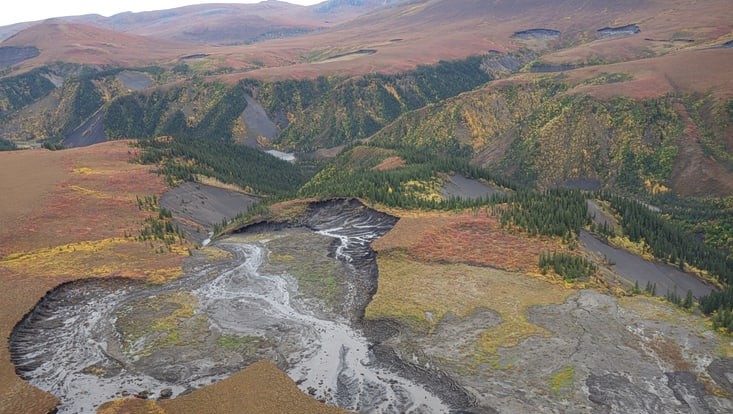By Air, Sea and Satellite: Major Cloud Research Campaign Launched
22 January 2020, by Stephanie Janssen

Photo: UHH/Schell
In the context of the climate system, clouds remain a mystery. A new research mission will tackle that mystery. For a several-week-long period, four research vessels and four aircraft will gather data in the vicinity of Barbados – a mega-project coordinated in Paris and Hamburg. And meteorologist Felix Ament will be on board one of the aircraft.
Mr. Ament, the current mission, EUREC4A, requires a tremendous amount of research and resources. Is the investment justified?
Yes, it is. In order to make more accurate climate projections, we need a better grasp of cloud formation. In the new campaign, we’ll be investigating the process at a single site, and in painstaking detail. This approach doesn’t create more costs; it creates more value. By coordinating the various research methods used, we can achieve synergies. Moreover, our findings will be transferrable to other regions.
What recent advances have there been in cloud research? And what are the big questions?
We have recently learned that clouds’ organization is important for their role in connection with climate change: for example, clouds that are evenly distributed, one after the other, produce very different effects than clouds that are bunched together. What we want to know now: which factors determine how clouds are organized? Temperature and humidity are likely candidates, but these factors alone can’t explain everything.
Then what will you be looking for?
There are indications of another factor: dynamics. Using wind measurements, we can determine how the air in the atmosphere is moving. When it flows together into a central point, it causes the surrounding air masses to rise; when it flows outward instead, these air masses sink. We want to find out how the cloud system as a whole reacts to these movements.
And how will you measure it?

We’ll be comprehensively monitoring a circular area with a radius of ca. 100 km for several weeks. Our team’s job will be to monitor the wind at the edges of the survey area. Is air flowing into or out of it? In this regard, we’ll fly precisely the same circular route along the perimeter over and over again, eight hours a day, using the German research aircraft HALO. Every five minutes we’ll deploy what’s known as a dropsonde, which produces a vertical profile of the atmosphere as it plummets toward the ground. In this way, we’ll essentially create a “curtain” of dropsondes to continuously gather new data.
What will the other aircraft and vessels be doing?
Two other research aircraft will record what’s taking place inside the survey area. At the same time, the research vessel METEOR, which will also have researchers from Universität Hamburg on board, will test the air near the sea surface. We’ll also receive satellite data, and readings from the ground-based observatory on Barbados. This will allow us to more precisely observe which dynamic conditions produce certain types of cloud patterns.
How will this help improve climate forecasts?
The trade-wind zone near the Equator is characterized by small, flat-based, relatively low clouds – cirrocumulus clouds. Light and fluffy, they rarely produce rainfall. Further, they reflect more sunlight than the ocean, which cools the climate. One theory predicts that, as global warming progresses, there may be fewer and fewer of these clouds. If that happens, their cooling effect will be lost, causing temperatures to rise even more. Accordingly, a clearer understanding of this aspect is vital to projecting future temperatures.
The climate model ICON can already simulate clouds with extremely high resolution, down to 100 meters. Isn’t that good enough?
ICON will also be with us on Barbados, in a manner of speaking. We’ll be feeding the latest data into the model on a daily basis, allowing us to directly compare the outcomes with real-world readings. These new climate models with very high resolution can beautifully depict cloud patterns. Yet the outcomes must always be verified using actual field readings, to ensure the virtual realities produced by the models don’t “take on a life of their own.”
Joint press release for Germany on the launch of the campaign
EUREC4A
EUREC4A stands for Elucidating the role of clouds - circulation coupling in climate. The new campaign will seek to identify in detail the conditions that lead to the formation and dissipation of flat-based convective clouds over the Atlantic.
How do research flights help us understand the atmosphere?
Getting Closer to the Clouds with HALO
Interview with Dr. Heike Konow
Contact:
Prof. Dr. Felix Ament
(on site from 26.01. to 09.02.2020)
Universität Hamburg
CEN – Center for Earth System Research and Sustainability
Tel.: +49 40 42838-3597
E-Mail: felix.ament"AT"uni-hamburg.de
Stephanie Janssen
Universität Hamburg
Press / Outreach
CEN – Center for Earth System Research and Sustainability
Tel.: +49 40 42838-7596
E-Mail: stephanie.janssen@uni-hamburg.de


